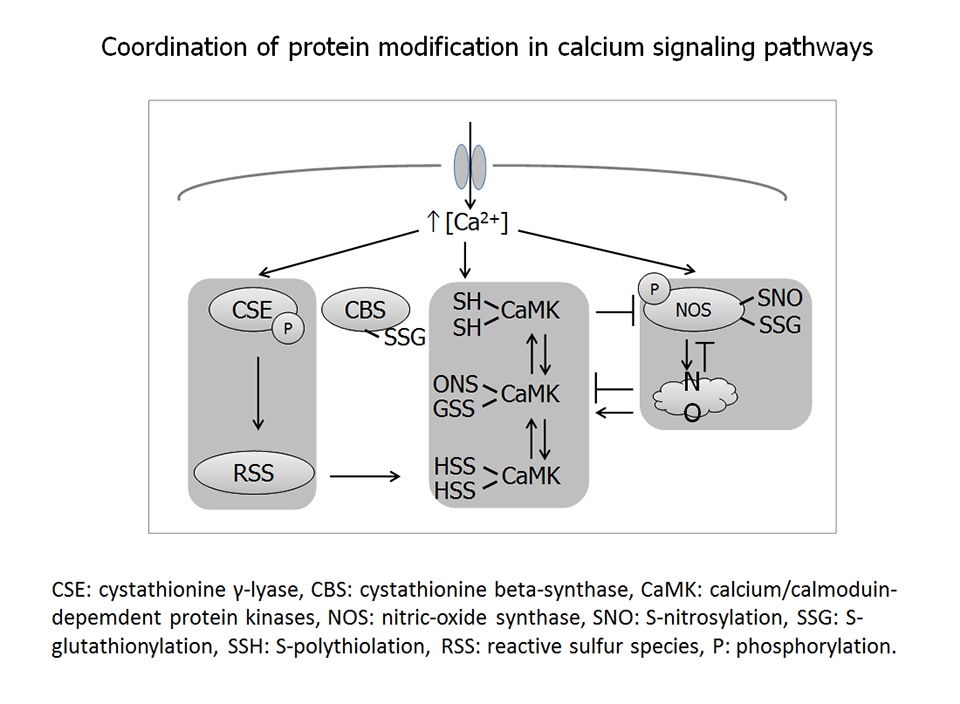Laboratory of Pharmacology
Research Objectives
- Molecular mechanism for redox-dependent regulation of calcium signaling.
- Regulation of CaM-kinases by reactive sulfur species.
- Regulation of reactive sulfur species producing enzymes by post translational modification.
- Effect of nitric oxide on the nicotine-induced calcium signaling.
- Mechanisms in anticancer drug-induced peripheral neuropathy.
Synopsis
-
Calcium signaling is crucial for several aspects of cellular functions in most cells.
Responses to increased intracellular Ca 2+ are often mediated by the Ca 2+ -binding protein
calmodulin (CaM). The actions of CaM are mediated by its association with specific target
proteins, some of which are known as CaM-binding proteins, which include kinases such
as CaM kinases (CaMKs) and hemeproteins such as the nitric-oxide synthases (NOSs).
We are interested in calcium signal transduction pathways in the mammalian neural
system, with a particular focus on CaM kinases and neuronal NOS (nNOS).
Co- and post-translational protein modifications increase the diversity of protein structure
and function. We focus on the regulatory mechanism of CaM kinases and nNOS via their
modifications such as phosphorylation, S-nitrosylation, S-glutathionylation, and S-
polythiolation using protein chemistry, molecular biology, and cellular imaging approaches.

- We reported that cysteine hydropersulfide (CysSSH) was generated by cystathionine γ-lyase (CSE) and cystathionine beta-synthase (CBS), which in turn may contribute to other CysSSH derivatives of peptides/proteins (termed reactive sulfur species: RSS), involving in their catalytic activities. We focus on defining the molecular mechanism of RSS-induced regulation of CaM-kinases in cells.
- We investigate post translational modification of CBS and CSE such asphosphorylation and redox modifications.
- NO is a signaling molecule involved in many physiological and pathological processes. NO signals by activating guanylate cyclase and by S-nitrosylation of many target proteins. We reported that nNOS expression promotes nicotine-induced Ca 2+ influx in cells. We investigate the mechanism of enhancement of Ca 2+ influx in nNOS expressing cells.
- Peripheral neuropathy is a common adverse effect of anticancer drugs. It results in patient suffering and also limits the treatment with potentially useful anticancer drugs.Although many researchers have studied anticancer drug-induced peripheral neuropathy, effective clinical preventive and treatment strategies have not been established. The mechanism is not well understood. We are trying to elucidate the molecular mechanism of peripheral neuropathy induced paclitaxel and oxaliplatin.
